Reviews
Jules et Jim
François Truffaut
France, 1962
Credits
Review by Rumsey Taylor
Posted on 04 April 2010
Source Criterion Collection DVD
Jules and Jim are of Austrian and French descent, respectively. One is blond and the other brunet; one is shy whereas the other is more forthcoming. But whatever differences they have are rendered immediately negligible. Shortly after they meet, they learn each other’s native language. Soon they’re attending the gym together (they even have matching masseuses), meeting each other’s families, and repairing to the same pubs to bolster the other’s confidence in courting women. For years the pair will remain deeply connected to each other—tellingly, when Jules’ wife expresses her interest in Jim late in the film, Jules encourages the affair, as it is the only way to maintain their friendship.
François Truffaut adapted Jules and Jim from Henri-Pierre Roché’s novel, and much of the text is transposed into voiceover narration. At times this narration is redundant, clarifying what is already ably rendered on screen, but it lends the film a sense of melody, one paralleled in the variety of the mise en scène. Interstitial footage is of a different era and filmstock — a return to Paris is transcribed in an old 8mm newsreel of an elevator on the Eiffel Tower, for example — and the camerawork varies between intimate closeups to helicopter shots to elaborate crane movements. The opening introduces the title characters in a spree of disassociated excerpts, set to Georges Delerue’s abrupt, whimsical title score, and within minutes the first few years of their friendship are summarized. The entire film sustains this rhythm, modulating between playful and solemn: one of Jules’ girlfriends demonstrates her “steam engine” cigarette trick in a 180° pan, set to another blast of Delerue’s score; when Jules introduces Jim to a new girlfriend, Truffaut emphasizes his instruction, “Not this one, Jim,” with an onscreen caption.
The woman in question is first chanced upon in an otherwise unremarkable visit to Jules’ family, in which he and Jim are audience to a slideshow of Greek sculptures. They recognize the object of their shared romantic obsession immediately in the face of one of the sculptures:
The tranquil smile on the crudely sculpted face mesmerized them. The statue was in an outdoor museum on an Adriatic island. They set off immediately to see it. They both had the same white suit made. They spent an hour by the statue. It exceeded their expectations. They walked rapidly around it in silence. They didn’t speak of it till the next day. Had they ever met such a smile? Never. And if they ever met it? They’d follow it.
Later, Jules and Jim recognize this same smile on the face of Catherine, a young, untempered French woman introduced in a concentrated frenzy of varying camera angles and compositions. The boys’ affection is such that they will remain alternately entranced or tormented for as long as they will know Catherine. To both Jules and Jim Catherine is a living objet d’art, a queen who privileges them with her presence. To attend her court necessitates the suppression of their individual preferences.
As for Catherine, portrayed with natural aplomb by Jeanne Moreau, she is tenuously committed to any relationship she’s in at the moment, but responsibly open about her infidelities. She is first courted by Jules, who proposes to her after a matter of months; she accepts unclimactically: “You haven’t known many women, but I’ve known plenty of men. It averages out. We might make an honest couple.” Later, she’s in the arms of Jim, and before they go to bed she describes the purpose of her infidelity:
There, now you’re mine and I’m yours. All is well. But in your letters, you spoke so much of your affairs. Well, I have my own. You spoke of bidding farewell to your loves. I decided to bid farewell to mine too. You’ll hold me in your arms all night long, but that’s all. We want a child, don’t we? Well, if I had one now, I wouldn’t know if it was yours. You understand?
“We must start with a clean slate,” she concludes. Her honesty is manipulative but appreciable. Whereas so many love stories posit deceit as an interruptive force in a romantic conflict (or as Jim says, fictions that “revel in vice to preach virtue”), Jules and Jim is a film of disarming emotional clarity, and this clarity both nourishes and foredooms the relationship of the title characters.
It is a considerable accomplishment that these characters are rendered without any sense of judgment. The film remains totally affectionate, so even as the scenario lapses into Catherine’s manipulations or Jules’ and Jim’s forthright frustrations, the tone remains bittersweet. (Even the conclusion, which occurs in a cemetery following the death of two of the central characters, is humorously tender.) The melody of Roché’s narrator weaves in and out, as do the reprisals of Delerue’s leitmotif (which is even sung pleasantly by Moreau at one point), and this modulation in tone evokes the natural spirit of a relationship. While the evidence of decline and disappointment becomes increasingly apparent, the melody encourages us to remember the hallmarks and to suppress the tragedies, much as we do our own.
More Love on the Run: The Films of François Truffaut
-

Les Mistons
1957 -
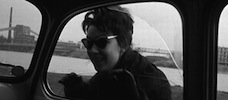
Une histoire d’eau
1958 -

The 400 Blows
1959 -
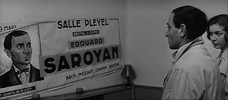
Shoot the Piano Player
1960 -
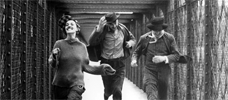
Jules and Jim
1962 -
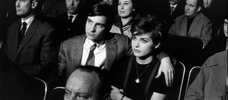
Antoine and Colette
1962 -
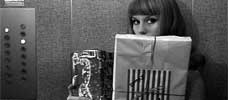
The Soft Skin
1964 -
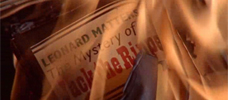
Fahrenheit 451
1966 -
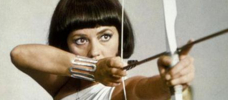
The Bride Wore Black
1968 -
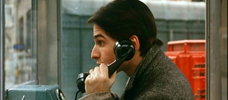
Stolen Kisses
1968 -
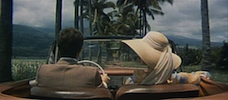
Mississippi Mermaid
1969 -
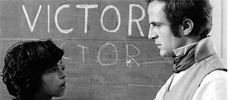
The Wild Child
1970 -
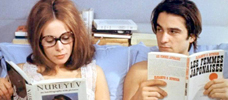
Bed and Board
1970 -

Two English Girls
1971 -
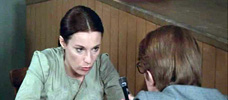
Such A Gorgeous Kid Like Me
1972 -

Day for Night
1973 -
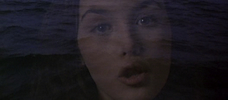
The Story of Adele H.
1975 -

Small Change
1976 -
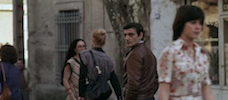
The Man Who Loved Women
1977 -
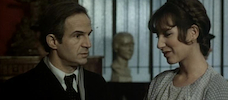
The Green Room
1978 -
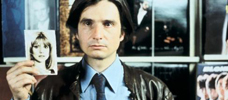
Love on the Run
1979 -
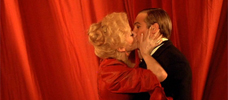
The Last Metro
1980 -
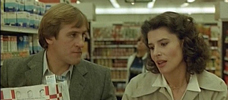
The Woman Next Door
1981 -
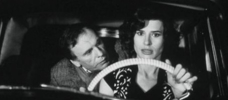
Confidentially Yours!
1983
We don’t do comments anymore, but you may contact us here or find us on Twitter or Facebook.



